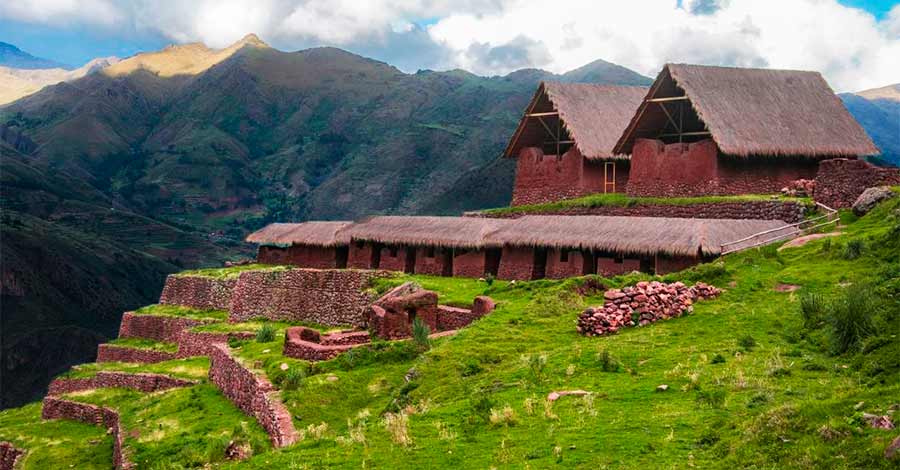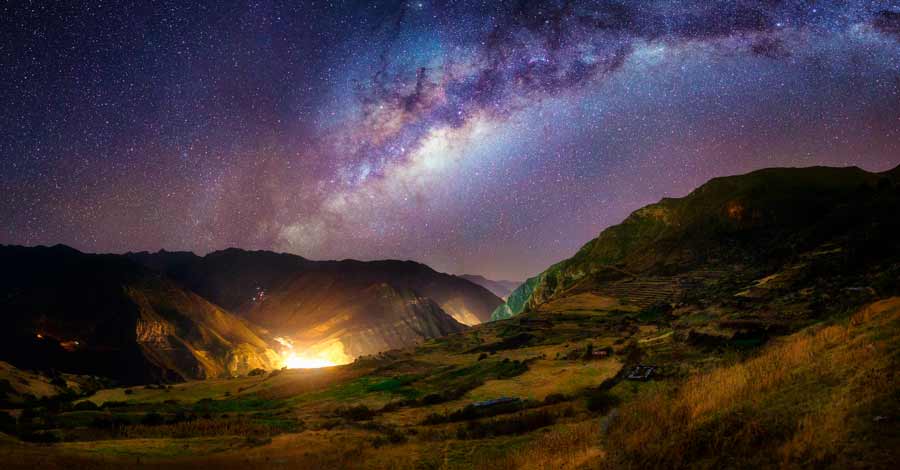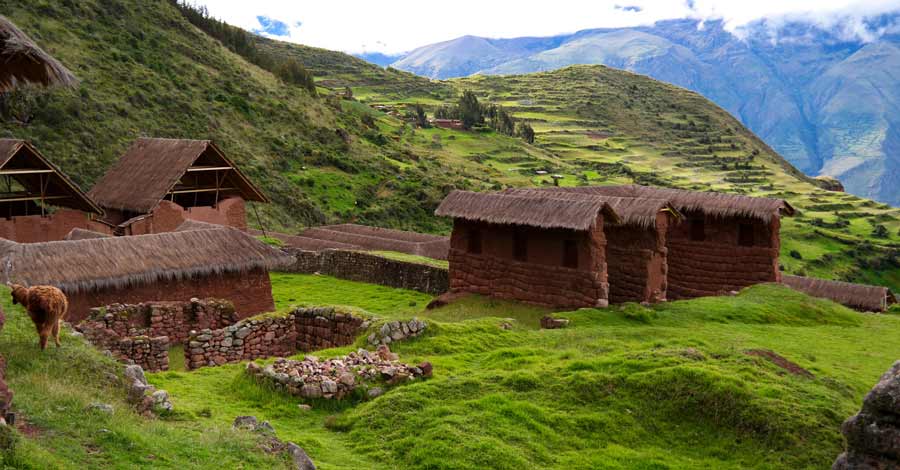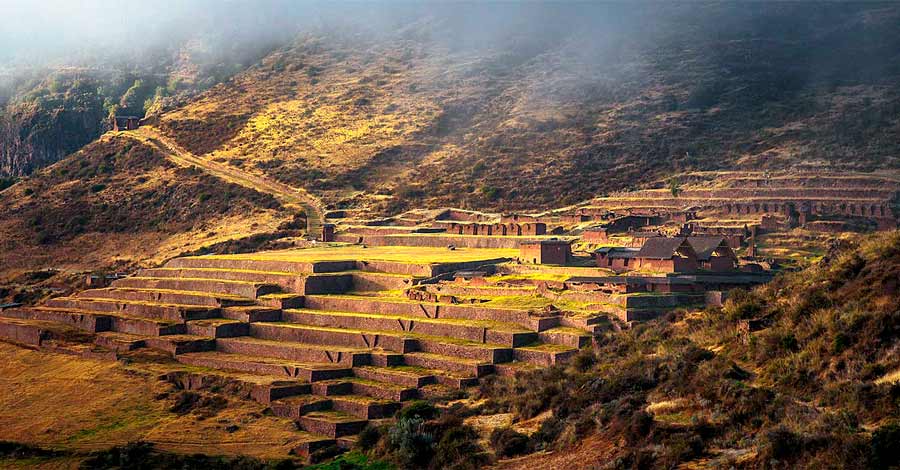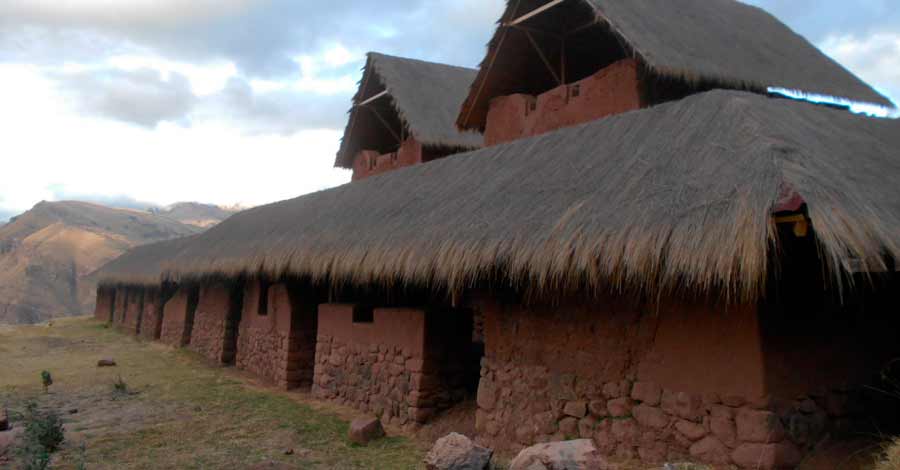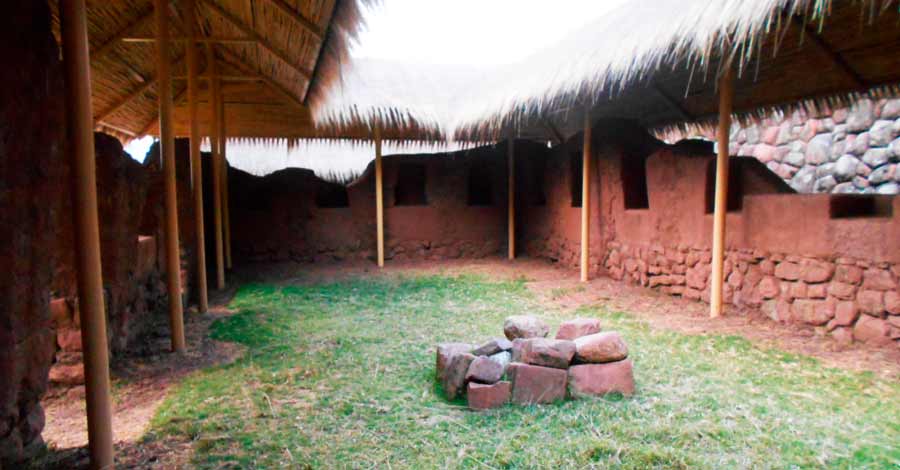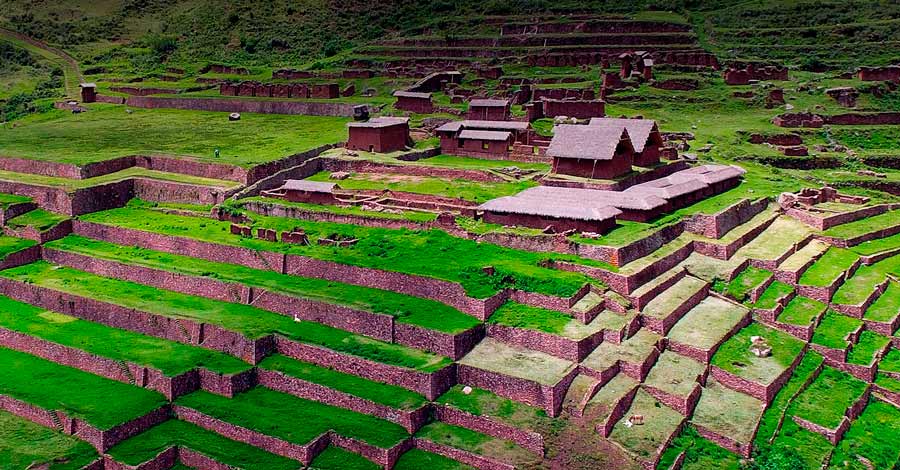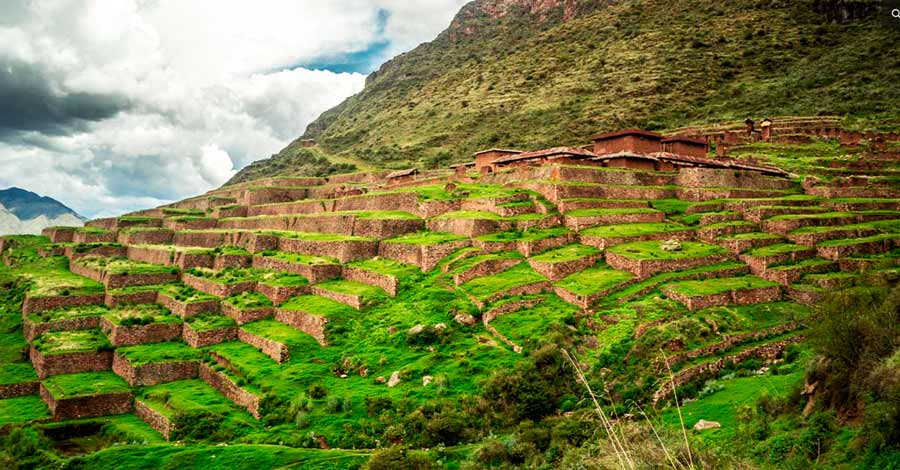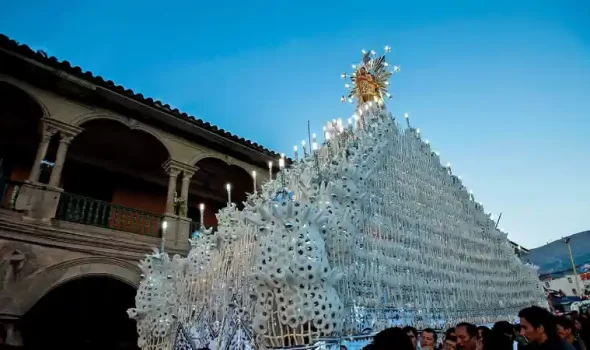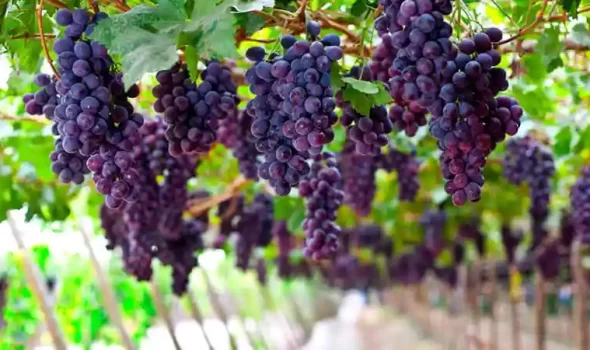Huchuy Qosqo or “Little Cusco” shows an Inca site of great beauty and symmetry adapted to the slope of a mountain. The complexity of the construction of this Inca site can be compared to Ollantaytambo or Pisac. Accompany Auri to visit one of the little-known jewels of Inca architecture in the heights of the Sacred Valley of the Incas.
What is Huchuy Qosqo?
Huchuy Qosqo is an archaeological site of Inca manufacture that enjoys a privileged location in the Sacred Valley of the Incas. It is located in a high area from where you can see the valley as a balcony, so it is also called “the place from where you can see the lightning” during storms in the rainy season. From Huchuy Qosqo you can appreciate the opposite side crossing the Sacred Valley of the Incas, observe the perpetual snow-capped mountains of exuberant beauty as the Pitusiray and Sawasiray. The archaeological site of Huchuy Qosqo or Qaqyaqawana was declared Cultural Patrimony of Peru in 2003.
Location and altitude of Huchuy Qosqo
The archaeological zone of Huchuy Qosqo is situated within a small plateau at an altitude of 3670 meters in the upper third of the mountains that are located at the height of the town Lamay. Huchuy Qosqo is located within the province of Calca, 50 kilometers north of the city of Cusco.
Meaning of the name “Huchuy Qosqo”.
Huchuy Qosqo is a Quechua term that means “small Cusco”. It adopted this appellation in the early twentieth century due to its architectural layout very similar to the ancient city of Cusco. In Inca times it was known as Qaqyaqawana or Xaquixaguana (Jaquijaguana), Quechua terms that translate as “place from where lightning or electrical discharges are appreciated”.
Climate of Huchuy Qosqo
Huchuy Qosqo is located in the Peruvian “suni” region according to Javier Pulgar Vidal. The climate is generally temperate, moderately cold and rainy during the months of the rainy season (December to March). This season is generally cold with seasonal rain and hail precipitation. The annual temperature varies between 7 and 18°C during the day and becomes much colder at night. In summary, the climate is cold during the rainy season. Dry, temperate and even hot during the non-rainy months.
Brief history of Huchuy Qosqo
The chronicler Pedro de Cieza de Leon, in his second chronicle called “The Lordship of the Inkas”, stated that the palaces of Huchuy Qosqo were built by the Inca Wiracocha, the eighth Inca ruler. This Inca chose to leave Cusco to take refuge in these enclosures during the great Inca-Chanca war.
The ethnohistorian Maria Rostworoski, in her book “History of the Tahuantinsuyo”, adds that Wiracocha chose as his successor to his son Inca Urco who, dizzy with power and vices, proved to be totally incapable of governing. The Inca royals were very upset with this election and tried to conspire to impose another son of Wiracocha, the prince Cusi Yupanqui. The social unrest and tension increased every day and to make matters worse, the Chancas reached the entrance of the capital and were ready to destroy it.
In the year 1438, Wiracocha abandoned the city to his fate, and accompanied by his son Inca Urco, took refuge in his palaces in the Urubamba valley, in Jaquijguana or Huchuy Qosqo. Cusi Yupanqui (the future Inca Pachacutec) would assume the command of the Inca resistance and would end up defeating the fierce Chanca ethnic group.
The Spanish chronicler Juan de Betanzos precise in his chronicle that after ten years of leaving the power to Pachacutec, Wiracocha spent his last days in the valley of Xaquixaguana (today Huchuy Qosqo) and died at the age of eighty years in these palaces.
Another reason that makes Huchuy Qosqo important is the discovery of a mummified body. After Hispanic conquest, Gonzalo Pizarro found here the mummy that supposedly belonged to the Inca Wiracocha and ordered it to be burned. The descendants of the Inca kept the ashes in a jar that many years later would be discovered by the chronicler Polo de Ondegardo.
Construction technology of Huchuy Qosqo
For its type of constructions and all the vestiges found in this place, it is assumed that it was an administrative and military center with many constructions in the surroundings. In this place it is possible to observe Inca buildings of fine and perfect stone structures and grain warehouses called Qolcas that are located below the main site of Huchuy Qosqo. The Qolqas were a storage system. Huchuy Qosqo was an important agricultural center. Likewise, royal properties of Inca manufacture served as elegant rural palaces and, at times, fortresses to defend against rivals.
For its construction, hundreds of people were employed under the system called Mita, a mandatory collective work in favor of the state for public works such as the construction of Huchuy Qosqo under the command of many specialists and artisans.
Huchuy Qosqo exhibits some of the finest architectural work of the Inca empire. Today, there are still standing a series of architectural structures made with great ingenuity and wisdom, using for its construction lithic material combined with adobe and mud.
The walls have a slight inward inclination, resist telluric movements, the strong climatic inclemencies, and the inevitable passage of time. The constructions of Huchuy Qosqo are proof of high technology and Inca knowledge. Its buildings were built on a polished stone base with a fine clay plaster finish. The highest floors are built in adobe. The “windows” are trapezoidal in shape, narrower at the top and wider at the bottom, with stone lintels.
One of the most notable features of Huchuy Qosqo is its stepped location, which blends perfectly with the natural slope of the mountain, the result is of great aesthetic quality.
What to see in Huchuy Qosqo?
Among its constructions you can appreciate a “Kallanka” that was of great importance to host the Inca officials; of at least 40 to 50 meters long. In the same way, there are three remarkable buildings, one of three floors, with two floors of carved stone and an upper one of adobe, while the second preserves its structure based on adobe. The third building is a construction of rectangular base, made with large adobe bricks, which is believed to have had the purpose of being a space for the labor apprenticeship of the women of the Empire. In Huchuy Qosqo we also find large terraces, a very large square and a large Inca door that probably served as a gateway to control access to the town.
The water supply to the site is an irrigation canal built by the Incas, lined with stones perfectly assembled together to prevent water leakage, about 800 meters and several small reservoirs for irrigation. Upon the arrival of Spaniards, they used the site as a farm, demolishing some other Inca structures to build a larger reservoir.
How to get to Huchuy Qosqo?
To get to Huchuy Qosqo it is necessary to hike through different routes.
The first is a trek of 2 days and 1 night crossing ancient Inca trails that start from the Inca site of Tambomachay. This trek crosses mountain passes and borders beautiful lagoons overlooking the snow-capped peaks of the Andes Mountains. Choosing this option provides the opportunity to camp under the stars and the tranquility of this place charged with lots of Andean energy.
The second way is a shorter route that starts in the traditional village of Chinchero. This hike starts in the community of Taucca, a small village on the beautiful Piuray lagoon. The hike to Huchuy Qosqo takes a total of 3 to 4 hours, during which you can observe beautiful Andean landscapes.
The third route is the shortest one going up from the town of Lamay, the closest town to Huchuy Qosqo. The ascent from this village takes about two hours of walking through a narrow and steep road.
These hikes can be organized on your own, but we recommend that you do it with a travel agency and a local guide who already knows the paths and the history of this impressive Inca site.
When to visit Huchuy Qosqo?
You can visit Huchuy Qosqo all year long, but the best time is between the months of May and October, when the weather in the region is dry and thus avoid the muddy and slippery path due to the rains.
It is impossible not to be absorbed by the symmetrical and perfectly stepped beauty of Huchuyqosqo. To visit this and other Peruvian architectural wonders, remember to contact us. Auri Travel is pleased to help you with your travel plans to Machu Picchu and many other destinations in the country. Come and enjoy a personalized and unforgettable adventure with us!




